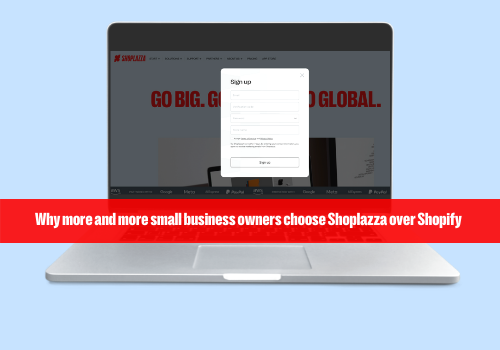Estimated time to read: 5 minutes.
Your business will be faced with writing product descriptions, whether for a menu, items, or services. Since these descriptions will appear on your website, SHOPLAZZA, Instagram, and Facebook store, they should be as compelling as possible.
Table of content:
- Start by identifying your target customers
- Present what are the benefits for them
- Set a tone
- Use a very visual format
- Write for the senses
- Tell a story
- Optimize your text for SEO
- Conclusion

Start by identifying your target customers
When writing a product description, you need to know who will read it. Think about your target customers. Imagine chatting with them in a relaxed atmosphere. Or imagine yourself standing next to them in a store, telling them about a product. How would the conversation go?
Consider the following questions:
- What are their interests and preferences?
- What type of person are they?
- Do they like humor or are they more serious?
- Why are they coming to your store?
- What are their weaknesses or challenges?
- What are their aspirations?
Use this language and tone in your product descriptions to connect with the buyer. Choose words and phrases that your customers would use. By aligning your product description with your brand tone, you ensure that your text and branding is consistent across all sections of your website.
Present what are the benefits for them
Potential customers don't want to read a long list of product features. They don't want to know what your product is, they want to know what the benefits are for them. What problems will it solve? And how is it going to improve their life?
Set a tone
A successful and convincing text is not just a list of strengths and benefits: it is also how they are expressed. It is important to define a style, a tone that will characterize your product descriptions and, at the same time, convey a certain image of your brand: therefore, it is essential that all product sheets respect a certain consistency at the level in the tone used.
Serious and distinguished, light, and funny, technical, and sharp… The possibilities are numerous, and there are no bad choices, except one that is not coherent with your brand or not very relevant to your brand. to your target customers. So, don't dwell on features and specifications (unless your audience likes technical talk), but translate them into customer benefit instead.
Use a very visual format
According to research, visitors read only 16% of the words on an average web page. To get people to buy your product, they'll likely need to read your description. So how do you get people to absorb your content when they just want to skim through product descriptions quickly? It might sound obvious, but you should use an easy-to-read format. Subtitles should be in a larger font than the body text, and you should use bullets where clarity is needed.
However, text isn't always the best way to describe your product. So, give your disliked customers an alternative product description with photos and videos. There is nothing worse than a product listing that doesn't have enough (or no) product images. Whether it's food, clothing, or tech gadgets, shoppers want to know exactly what it looks like, the more detailed the better. If you can, even add video content of the product to demonstrate its functionality more accurately and how to use it daily.
Write for the senses
Since online shoppers cannot touch the products, your product description should speak to their senses.
Describe the sensations, smells, sounds and tastes of the product. Your job is to help the buyer imagine they are holding the product in their hands. This may require the use of more specific words instead of general terms. Describing a blanket as soft can be a bit general, but saying it is "velvety" or "feathered" gives an image that goes beyond "soft".

Tell a story
Everyone appreciates good stories. Your description is your only chance to help your reader imagine what it would be like to own your product.
Content marketing and copywriting should be part of your overall storyline. The description of your product is a key element.
Start by providing them with context. Use the benefits you have identified and describe how the customer will feel when they own and use your product. Stories help appeal to the customer's emotions, and emotions sell products.
Another way to relate the shopper to the item they are viewing is to tell the story of the product itself. How and where was it made? Is there something special that someone might not know just by looking at them? Give your customer the story behind the product.
Optimize your text for SEO
A masterfully written product description won't sell you more if no one can find it (and therefore read it). This is where SEO optimization comes into its own. A listing well referenced on search engines will bring many potential customers to your page.
It starts with finding the right keywords. To find the perfect keyword, think about what your potential customer might type in their search engine. It is then necessary to identify the intention behind the keywords. It is necessary to understand whether behind a given research lies a desire to buy or simply the search for information.
For example, if a person is looking to find out the best material for a duvet cover, they will not type the same query as someone who has already decided to buy a duvet cover.
Once you have your keywords, use them wisely in the description, but also in other parts of the product sheet, especially its title. By correctly filling in your semantic tags and including your keywords, you respect the basic rules of SEO. Your product description must be structured with titles, sub-titles, it must not be too long and must always correspond to what your target would like to read.
Conclusion
The secret to writing great product descriptions is to engage, persuade, and sell. Do your product descriptions encourage readers to click buy or try? If not, then it's time to get back to the drawing or writing board. And writing product descriptions doesn't have to be a boring task. Bring your team together for a day of product description writing and let your company's personality shine.
Stay tuned with SHOPLAZZA blog!


